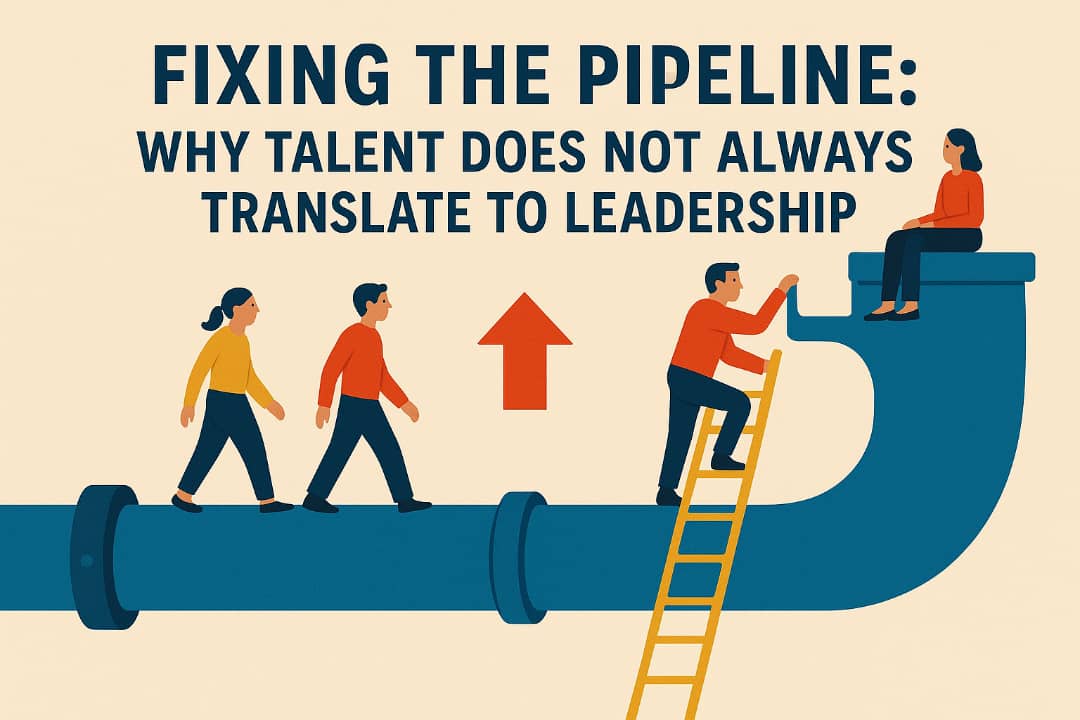
Across boardrooms in Lagos, tech campuses in Nairobi, and strategy rooms in London and San Francisco, one question keeps surfacing: Why do our brightest talents often stumble when promoted into leadership?
It’s not a local problem; it’s a global reality. Organizations are brimming with technically skilled, high-performing individuals. They deliver results. They innovate. They execute flawlessly. But many falter when asked to lead others. And it’s not because they’re not smart or driven, it’s because leadership is not the same as competence.
As Simon Sinek reminds us, “Leadership is not about being in charge. It is about taking care of those in your charge.”
That shift, from contributor to custodian of people, is where the real gap lies.
Talent ≠ Leadership
One of the most common missteps in organizations is the assumption that technical excellence equals leadership potential. A brilliant analyst might struggle to give feedback. A top salesperson might find it hard to delegate. A star engineer may never have navigated team dynamics or managed ambiguity.
The 2023 Global Leadership Development Study by Harvard Business Publishing confirms what many are sensing. In a survey of over 1,200 professionals across 20 countries:
• 76% expect human-centric skills (like empathy and emotional intelligence) to become increasingly critical.
• 68% say leaders must be more capable of navigating ambiguity and uncertainty.
And yet, many organizations still promote based on output not readiness.
So what happens? Talented individuals walk into leadership roles with no real preparation. The result is often frustration, disengagement, or worse, good people leaving, quietly.
As John Maxwell put it, “The greatest mistake we make is living in constant fear that we will make one.”
New leaders, under pressure and unsupported, often play it safe. They manage for survival, not growth.
Why the Pipeline Is Broken
The leadership pipeline is not just leaking, it’s misaligned. A PwC Nigeria CEO Survey found that only 1 in 3 CEOs believe their current leadership development model is working. Globally, organizations face similar struggles.
Many rely on outdated practices: annual training sessions, one-off workshops, or informal mentorship programs that lack consistency and structure. Leadership isn’t built through osmosis, it needs intention.
Rebuilding the Pipeline: What Needs to Change
If we want our organizations to thrive, we need to move from reactive to intentional leadership development. Here’s how:
- Spot Potential Early—Beyond Performance
Don’t wait for burnout or attrition to find out someone wasn’t ready. Look for signs: Who shows curiosity? Who takes initiative? Who influences without authority? Tools like 360-degree feedback, personality assessments, and stretch projects can provide clarity.
- Create Practical Development Pathways
Not every company can afford Ivy League programs, and that’s okay. Peer mentoring, job rotations, and project leadership opportunities offer meaningful experience.
As Herminia Ibarra says: “Act like a leader, think like a leader.”
- Infuse Leadership Into Daily Work
Encourage current leaders to model vulnerability, give real-time feedback, and empower others. Let leadership be something people experience every day, not just at training.
- Foster Psychological Safety
Many companies, particularly in emerging markets, still operate on rigid hierarchy. But innovation and leadership flourish when people feel safe to speak up, challenge ideas, and ask questions.
“Without psychological safety, there is no learning,” says Amy Edmondson, a leading voice on organizational behavior.
- Redefine What You Reward
Stop rewarding tenure or technical skill alone. Instead, measure what matters: How well do they engage teams? Can they navigate ambiguity? Are they growing others?
Leadership scorecards that include strategic thinking, empathy, adaptability, and team engagement can help separate great individual contributors from emerging leaders.
The Way Forward
Leadership is not magic. It’s a craft, one that must be observed, mentored, practiced, and refined. We must stop treating it like a reward for competence and start cultivating it as a discipline of service, courage, and vision.
As John Kotter aptly said: “Leaders establish the vision for the future and set the strategy for getting there.”
We do not have a talent shortage; we have a leadership development gap.
And the good news? It’s fixable. But only if we stop patching the symptoms and start rebuilding the system.
Reference



